Introduction
In the rapidly evolving landscape of data science, vector databases play a pivotal role in enabling efficient storage, retrieval, and manipulation of high-dimensional data. This article explores the definition and significance of vector databases, comparing them with traditional databases, and provides an in-depth overview of the top 15 vector databases to consider in 2024.
What are Vector Databases?
Vector databases, at their core, are designed to handle vectorized data efficiently. Unlike traditional databases that excel in structured data storage, vector databases specialize in managing data points in multidimensional space, making them ideal for applications in artificial intelligence, machine learning, and natural language processing.
The purpose of vector databases lies in their ability to facilitate vector embedding, similarity searches, and the efficient handling of high-dimensional data. Unlike traditional databases that might struggle with unstructured data, vector databases excel in scenarios where the relationships and similarities between data points are crucial.
Vector Database vs Traditional Database
| Aspect | Traditional Databases | Vector Databases |
|---|---|---|
| Data Type | Simple data (words, numbers) in a table format. | Complex data (vectors) with specialized searching. |
| Search Method | Exact data matches. | Closest match using Approximate Nearest Neighbor (ANN) search. |
| Search Techniques | Standard querying methods. | Specialized methods like hashing and graph-based searches for ANN. |
| Handling Unstructured Data | Challenging due to lack of predefined format. | Transforms unstructured data into numerical representations (embeddings). |
| Representation | Table-based representation. | Vector representation with embeddings. |
| Purpose | Suitable for structured data. | Ideal for handling unstructured and complex data. |
| Application | Commonly used in traditional applications. | Used in ai, machine learning, and applications dealing with complex data. |
| Understanding Relationships | Limited capability to discern relationships. | Enhanced understanding through vector space relationships and embeddings. |
| Efficiency in ai/ML Applications | Less effective with unstructured data. | More effective in handling unstructured data for ai/ML applications. |
| Example | SQL databases (e.g., MySQL, PostgreSQL). | Vector databases (e.g., Faiss, Milvus). |
Level up your Generative ai game with practical learning. Discover the wonders of vector databases for advanced data processing with our ai?utm_source=blog_page&utm_medium=blog&utm_campaign=SEO” target=”_blank” rel=”noreferrer noopener”>GenAI Pinnacle Program!
How to Choose the Right Vector Database for Your Project
When selecting a vector database for your project, consider the following factors:
- Do you have an engineering team to host the database, or do you need a fully managed database?
- Do you have the vector embeddings, or do you need a vector database to generate them?
- Latency requirements, such as batch or online.
- Developer experience in the team.
- The learning curve of the given tool.
- Solution reliability.
- Implementation and maintenance costs.
- Security and compliance.
Top 15 Vector Databases for Data Science in 2024
Discover the best tools for handling data in a simple way! Check out the top 15 Vector Databases for Data Science in 2024:
1. Pinecone
Website: Pinecone | Open source: No | GitHub stars: 836
Pinecone is a cloud-native vector database offering a seamless API and hassle-free infrastructure. It eliminates the need for users to manage infrastructure, allowing them to focus on developing and expanding their ai solutions. Pinecone excels in quick data processing, supporting metadata filters, and sparse-dense index for accurate results.
Key Features
- Duplicate detection
- Rank tracking
- Data search
- Classification
- Deduplication
2. Milvus
Website: Milvus | Open source: Yes | GitHub stars: 21.1k
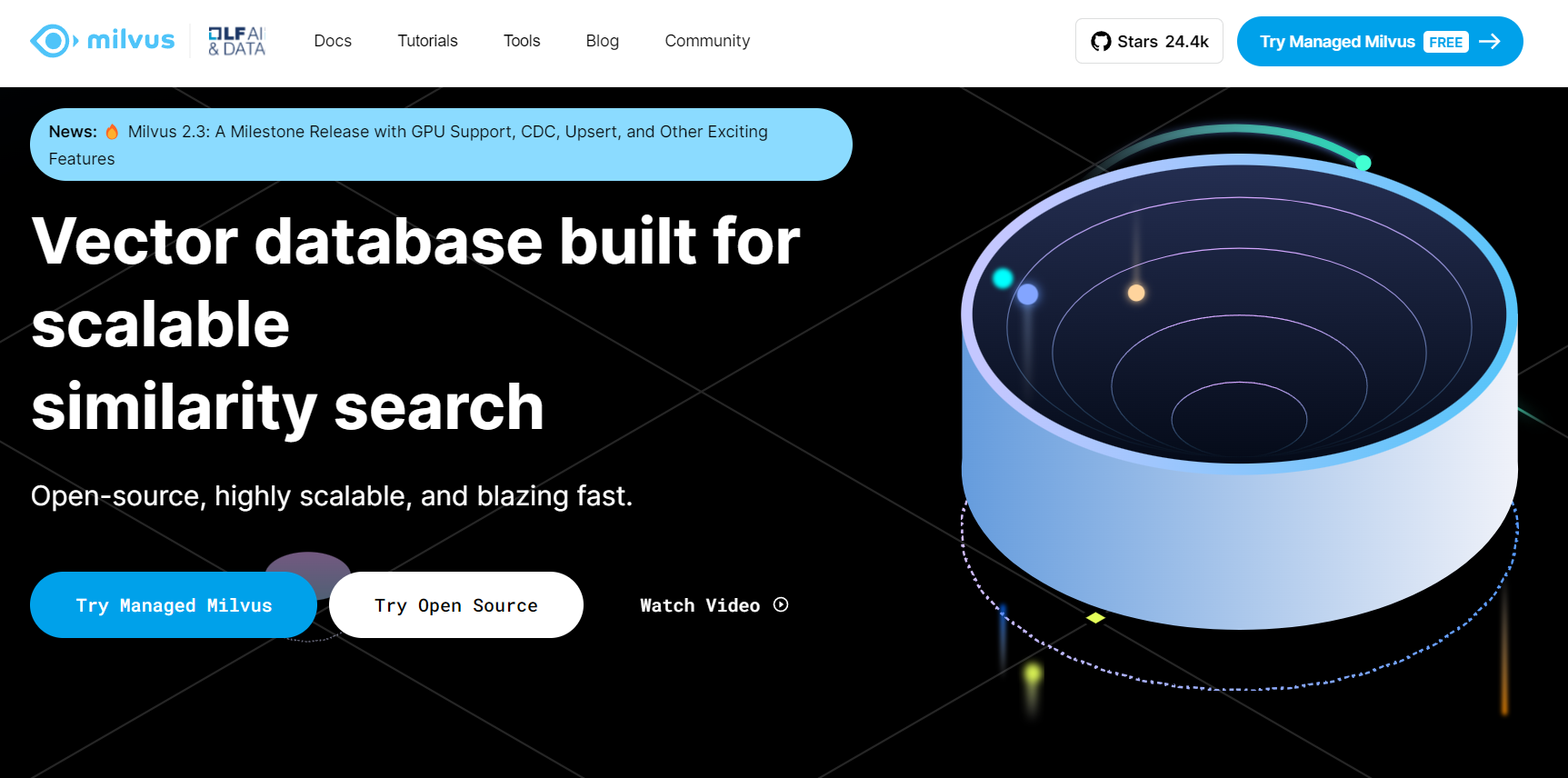
Milvus is an open-source vector database designed for efficient vector embedding and similarity searches. It simplifies unstructured data search and provides a uniform experience across different deployment environments. Milvus is widely used for applications such as image search, chatbots, and chemical structure search.
Key Features
- Searching trillions of vector datasets in milliseconds
- Simple unstructured data management
- Highly scalable and adaptable
- Search hybrid
- Supported by a strong community
3. Chroma
Website: Chroma | Open source: Yes | GitHub stars: 7k
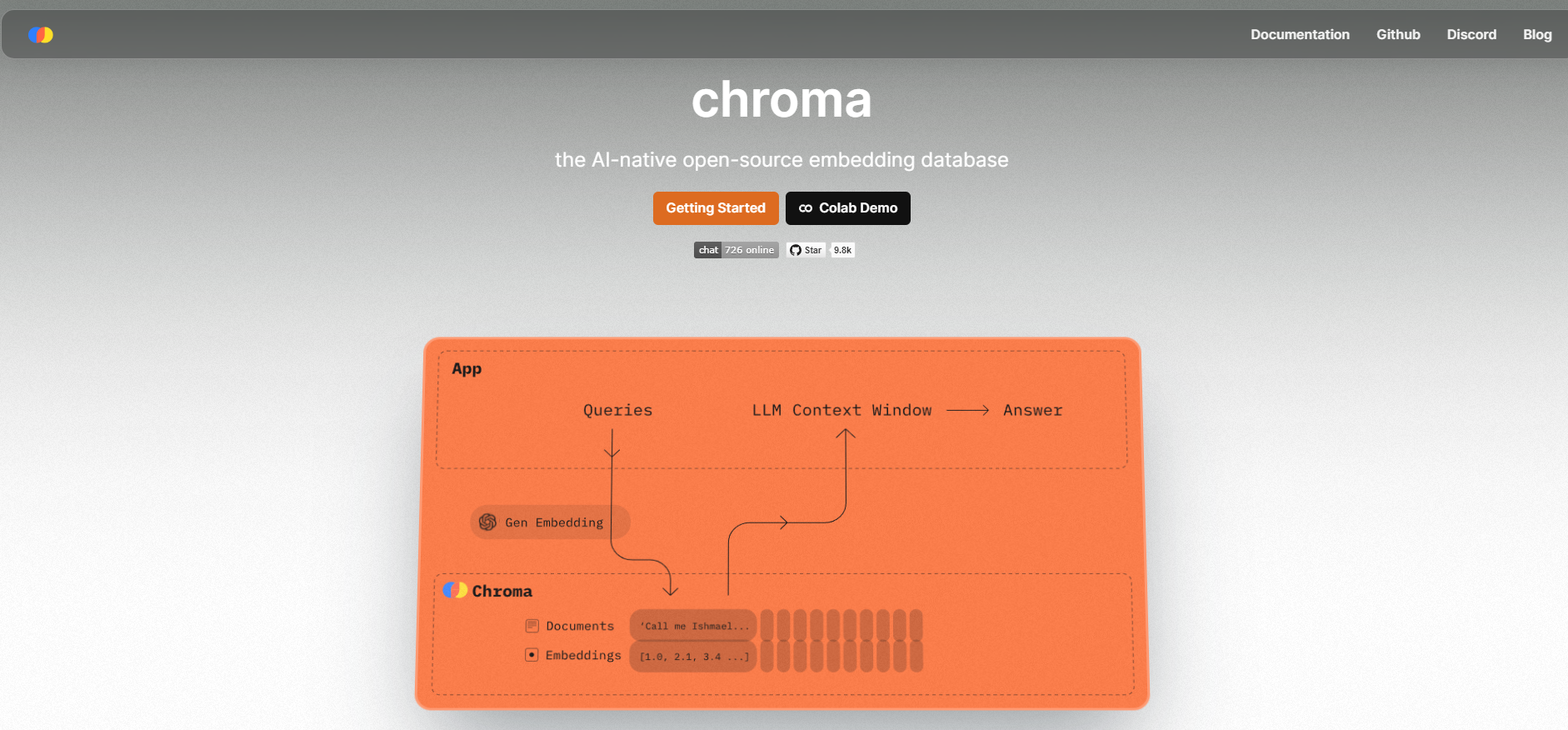
Chroma DB is an open-source vector database tailored for ai-native embedding. It simplifies the creation of Large Language Model (LLM) applications powered by natural language processing. Chroma excels in providing a feature-rich environment with capabilities like queries, filtering, density estimates, and more.
Key Features
- Feature-rich environment
- LangChain (Python and JavaScript)
- Same API for development, testing, and production
- Intelligent grouping and query relevance (upcoming)
4. Weaviate
GitHub: Weaviate | Open source: Yes | GitHub stars: 6.7k
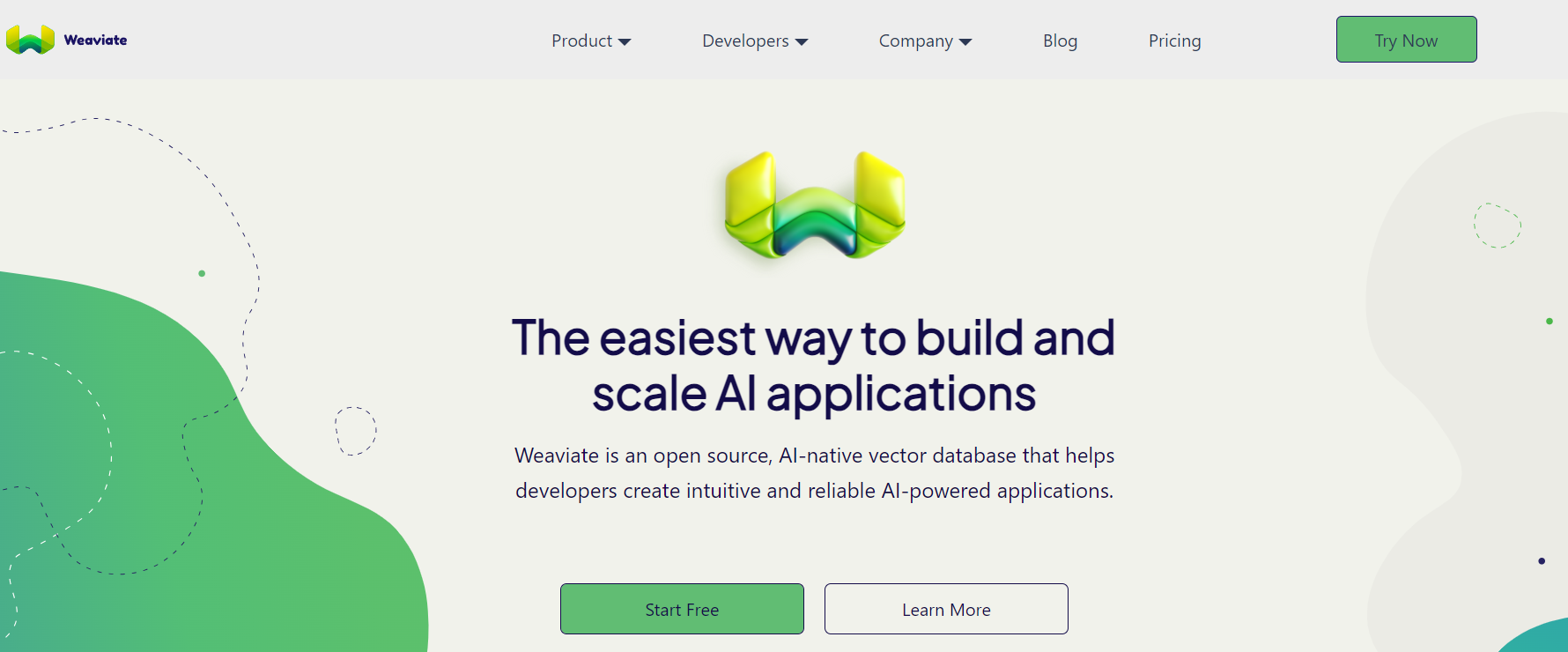
Weaviate is a resilient and scalable cloud-native vector database that transforms text, photos, and other data into a searchable vector database. It supports various ai-powered features, including Q&A, combining LLMs with data, and automated categorization.
Key Features
- Built-in modules for ai-powered searches, Q&A, and categorization
- Cloud-native and distributed
- Complete CRUD capabilities
- Seamless transfer of ML models to MLOps
5. Deep Lake
GitHub: Deep Lake | Open source: Yes | GitHub stars: 6.4k
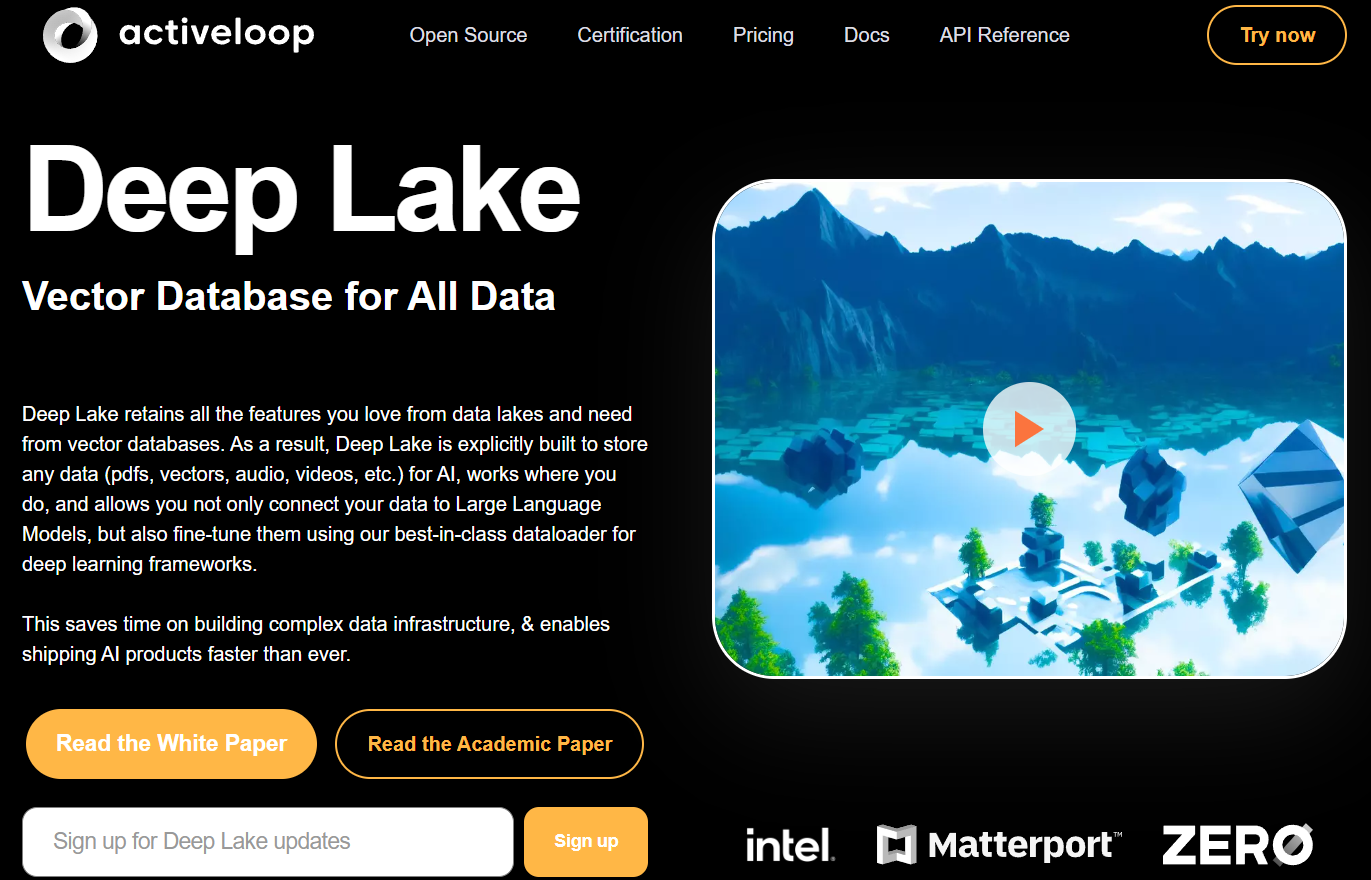
Deep Lake is an ai database catering to deep-learning and LLM-based applications. It supports storage for various data types and offers features like querying, vector search, data streaming during training, and integrations with tools like LangChain, LlamaIndex, and Weights & Biases.
Key Features:
- Storage for all data types
- Querying and vector search
- Data streaming during training
- Data versioning and lineage
- Integrations with multiple tools
6. Qdrant
GitHub: Qdrant | Open source: Yes | GitHub stars: 11.5k
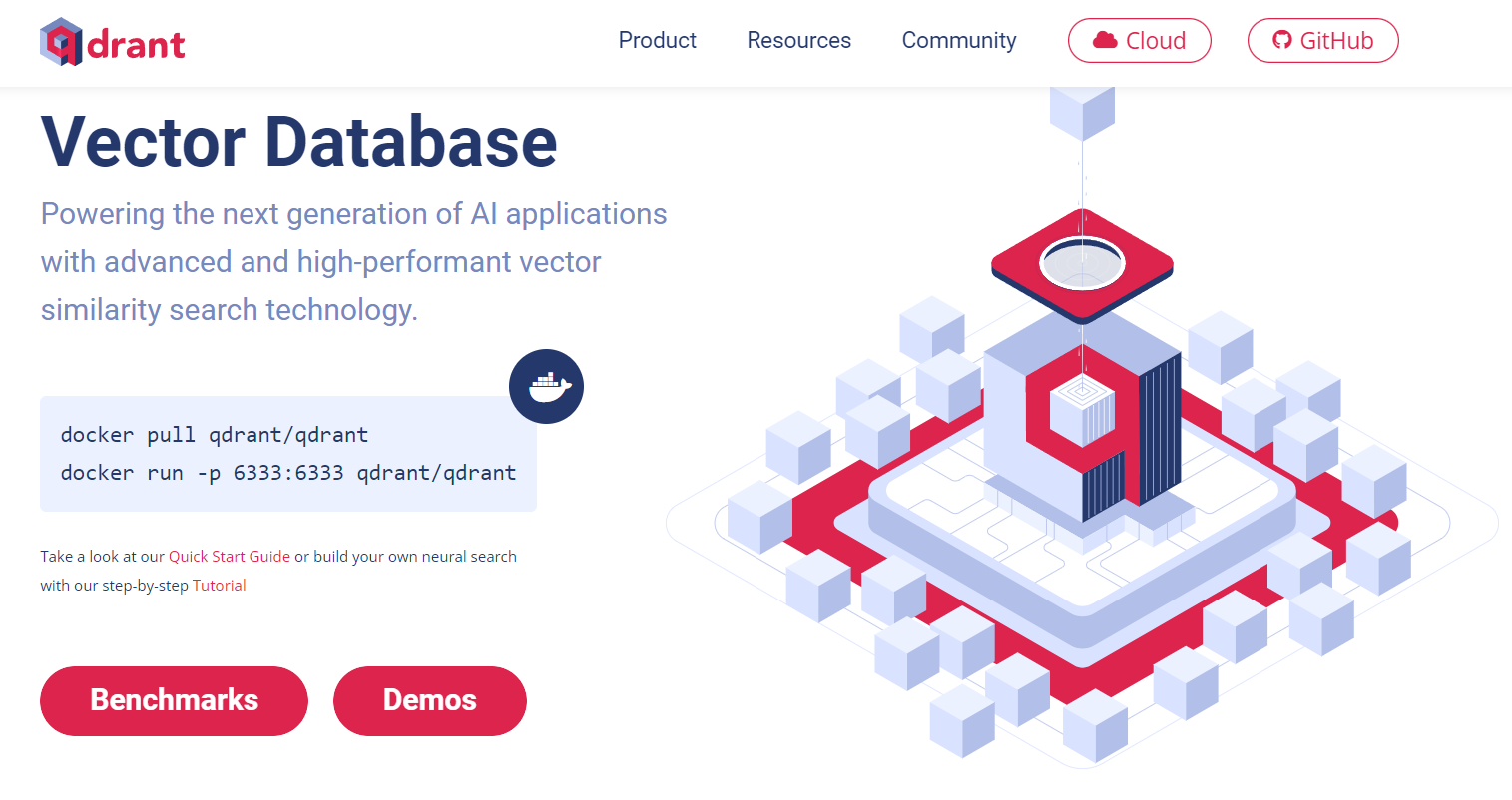
Qdrant is an open-source vector similarity search engine and database, that provides a production-ready service with an easy-to-use API. It excels in extensive filtering support, making it suitable for neural network or semantic-based matching, faceted search, and other applications.
Key Features
- Payload-based storage and filtering
- Support for various data types and query criteria
- Cached payload information for improved query execution
- Write-Ahead during power outages
- Independent of external databases or orchestration controllers
7. Elasticsearch
Website: Elasticsearch | Open source: Yes | GitHub stars: 64.4k
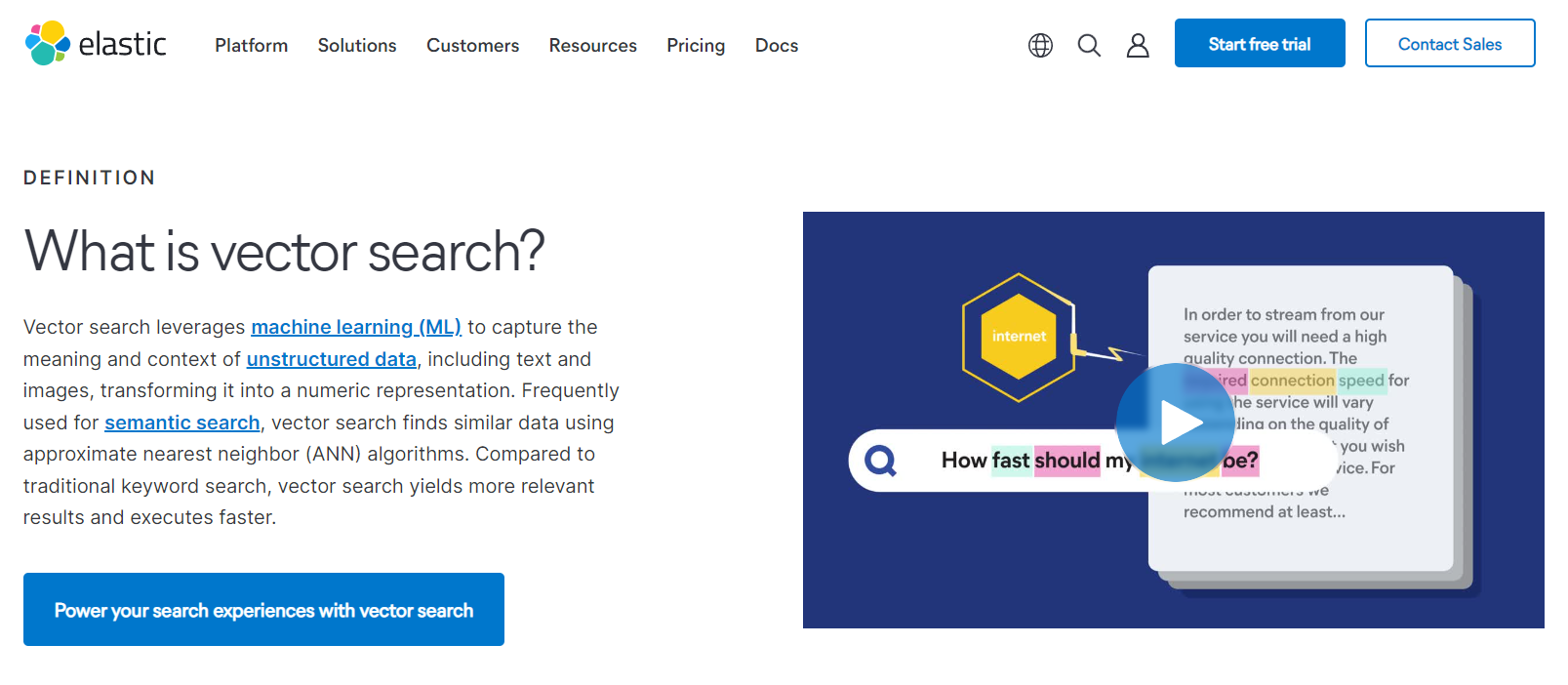
Elasticsearch is an open-source analytics engine handling diverse data types. It provides lightning-fast search, relevance tuning, and scalable analytics. Elasticsearch supports clustering, high availability, and automatic recovery while working seamlessly in a distributed architecture.
Key Features
- Clustering and high availability
- Horizontal scalability
- Cross-cluster and data center replication
- Distributed architecture for constant peace of mind
8. Vespa
Website: ai/” target=”_blank” rel=”noreferrer noopener nofollow”>Vespa | Open source: Yes | GitHub stars: 4.5k
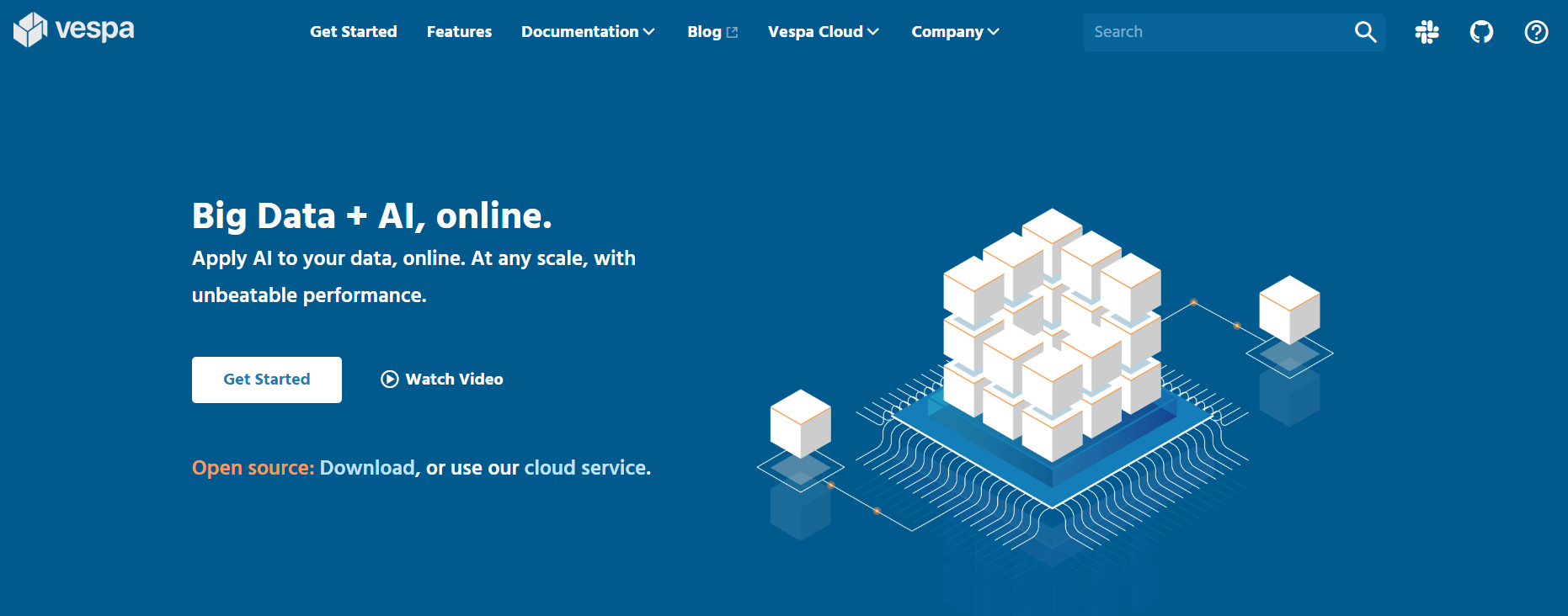
Vespa is an open-source data-serving engine designed for storing, searching, and organizing massive data with machine-learned judgments. It excels in continuous writes, redundancy configuration, and flexible query options.
Key Features
- Acknowledged writes in milliseconds
- Continuous writes at a high rate per node
- Redundancy configuration
- Support for various query operators
- Grouping and aggregation of matches
9. Vald
Website: Vald | Open source: Yes | GitHub stars: 1274
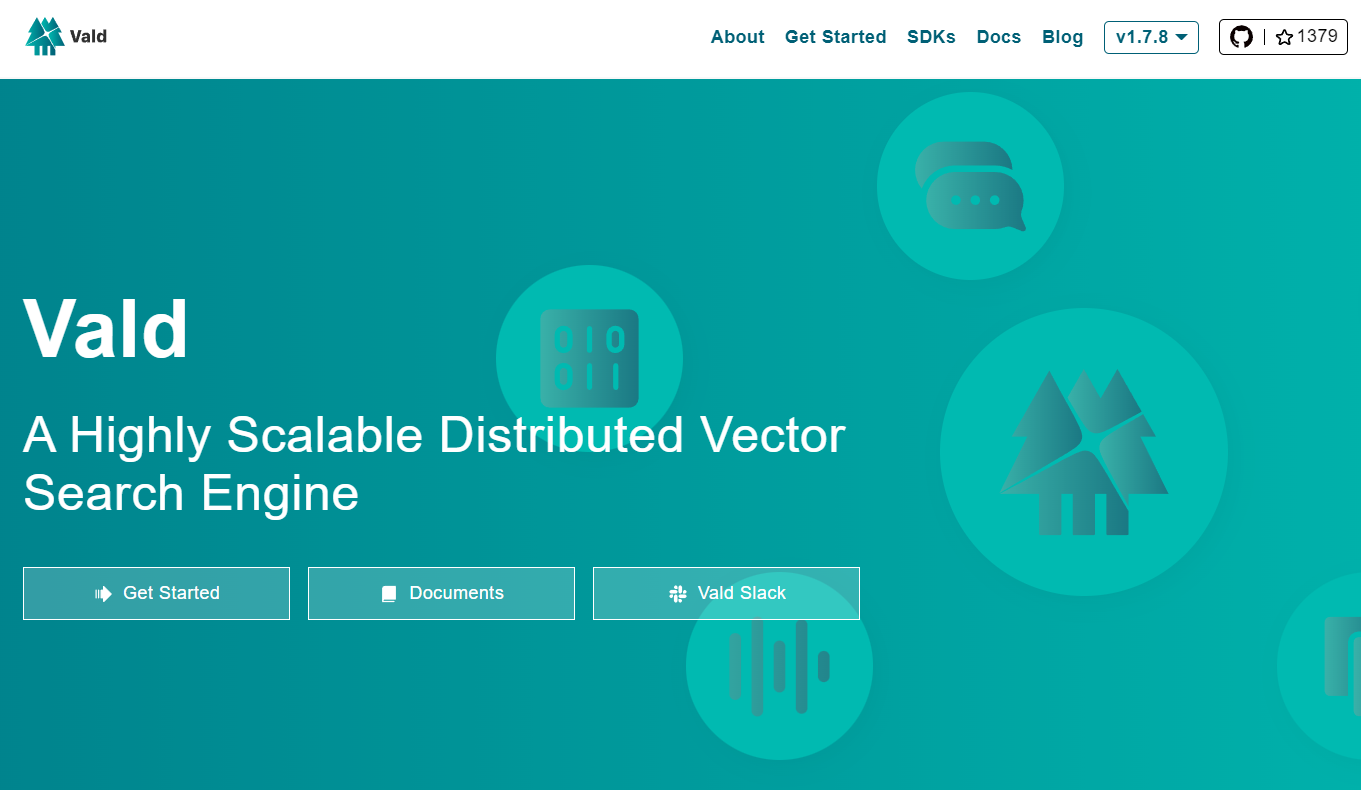
Vald is a distributed, scalable, and fast vector search engine utilizing the NGT ANN algorithm. It offers automatic backups, horizontal scaling, and high configurability. Vald supports multiple programming languages and ensures disaster recovery through object storage or persistent volume.
Key Features
- Automatic backups and index distribution
- Automatic rebalancing on agent failure
- Highly adaptable configuration
- Support for multiple programming languages
10. ScaNN
GitHub: ScaNN | Open source: Yes | GitHub stars: 31.5k
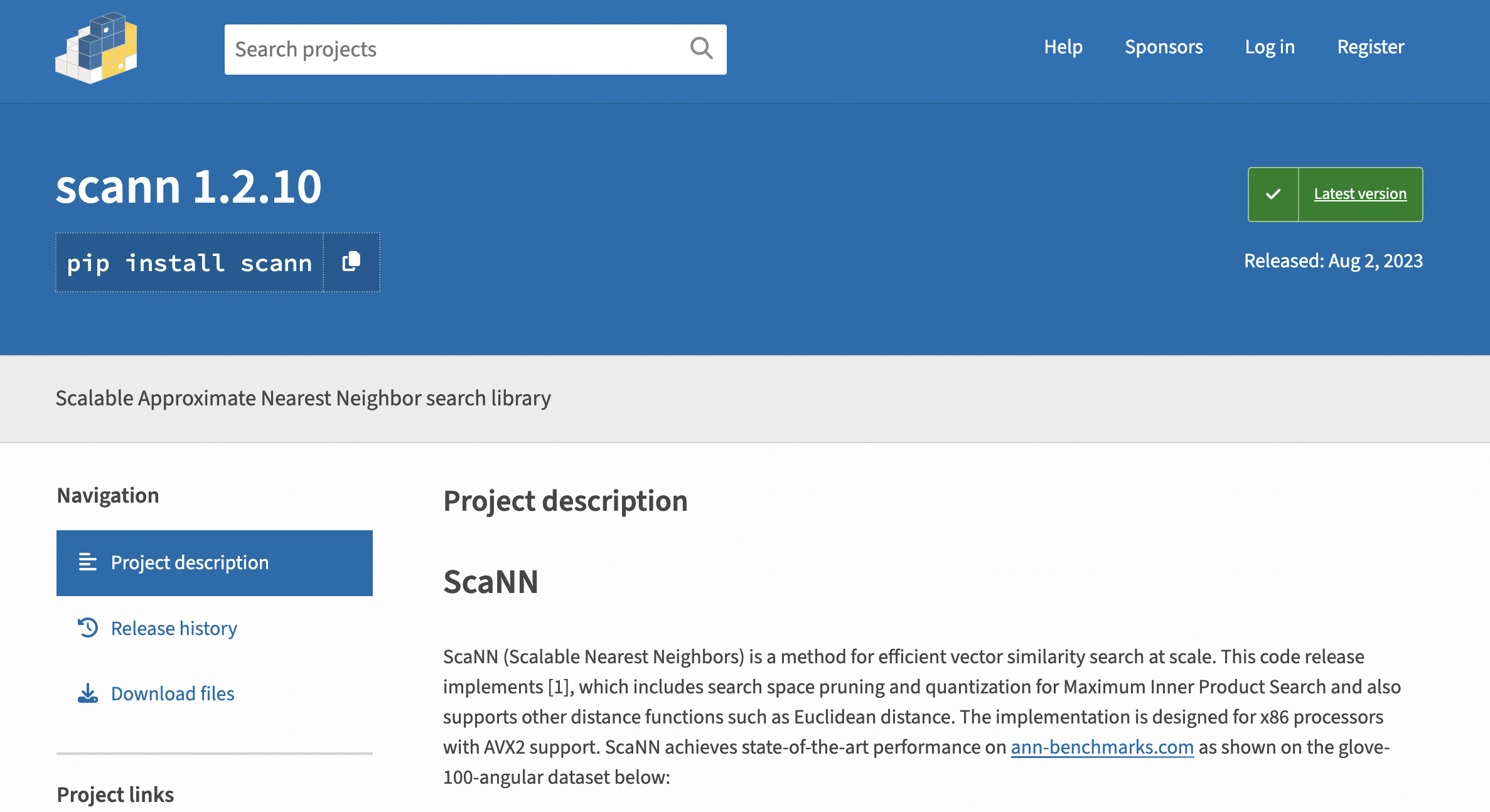
ScaNN (Scalable Nearest Neighbors) is an efficient vector similarity search method proposed by Google. It stands out for its compression method, offering increased accuracy. ScaNN is suitable for Maximum Inner Product Search with additional distance functions like Euclidean distance.
11. Pgvector
GitHub: Pgvector | Open source: Yes | GitHub stars: 4.5k

pgvector is a PostgreSQL extension designed for vector similarity search. It supports exact and approximate nearest-neighbor search and various distance metrics. Moreover, it is compatible with any language using a PostgreSQL client.
Key Features
- Exact and approximate nearest neighbor search
- Support for L2 distance, inner product, and cosine distance
- Compatibility with any language using a PostgreSQL client
12. Faiss
GitHub: Faiss | Open source: Yes | GitHub stars: 23k

Faiss, developed by Facebook ai Research, is a library for fast, dense vector similarity search and grouping. It supports various search functionalities, batch processing, and different distance metrics, making it versatile for a range of applications.
Key Features
- Returns multiple nearest neighbors
- Batch processing for multiple vectors
- Supports various distances
- Disk storage of the index
13. ClickHouse
Website: ClickHouse | Open source: Yes | GitHub stars: 31.8k
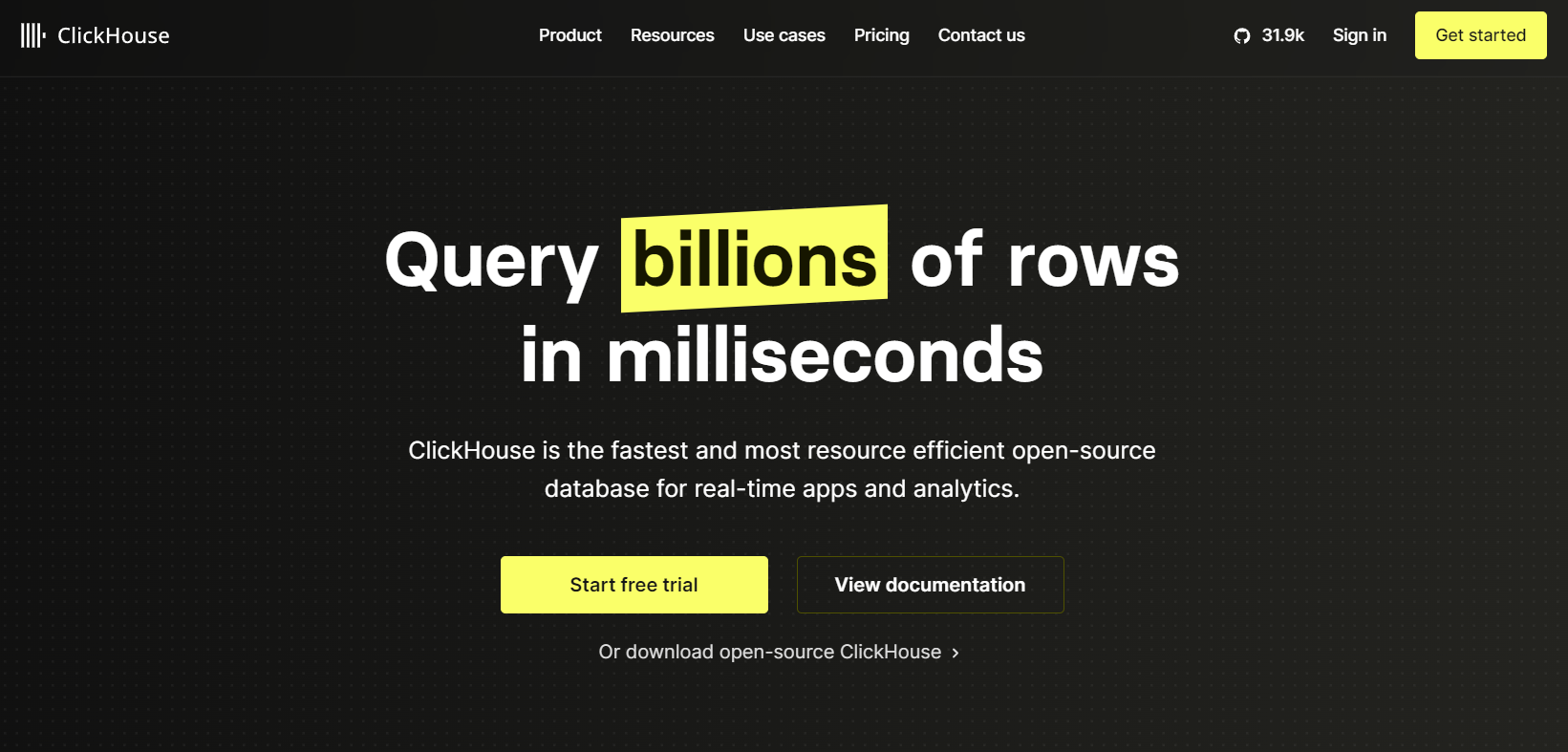
ClickHouse is a column-oriented DBMS designed for real-time analytical processing. It efficiently compresses data, uses multicore setups, and supports a broad range of queries. ClickHouse’s low latency and continuous data addition make it suitable for various analytical tasks.
Key Features
- Efficient data compression
- Low-latency data extraction
- Multicore and multiserver setups for massive queries
- Robust SQL support
- Continuous data addition and quick indexing
14. OpenSearch
Website: OpenSearch | Open source: Yes | GitHub stars: 7.9k
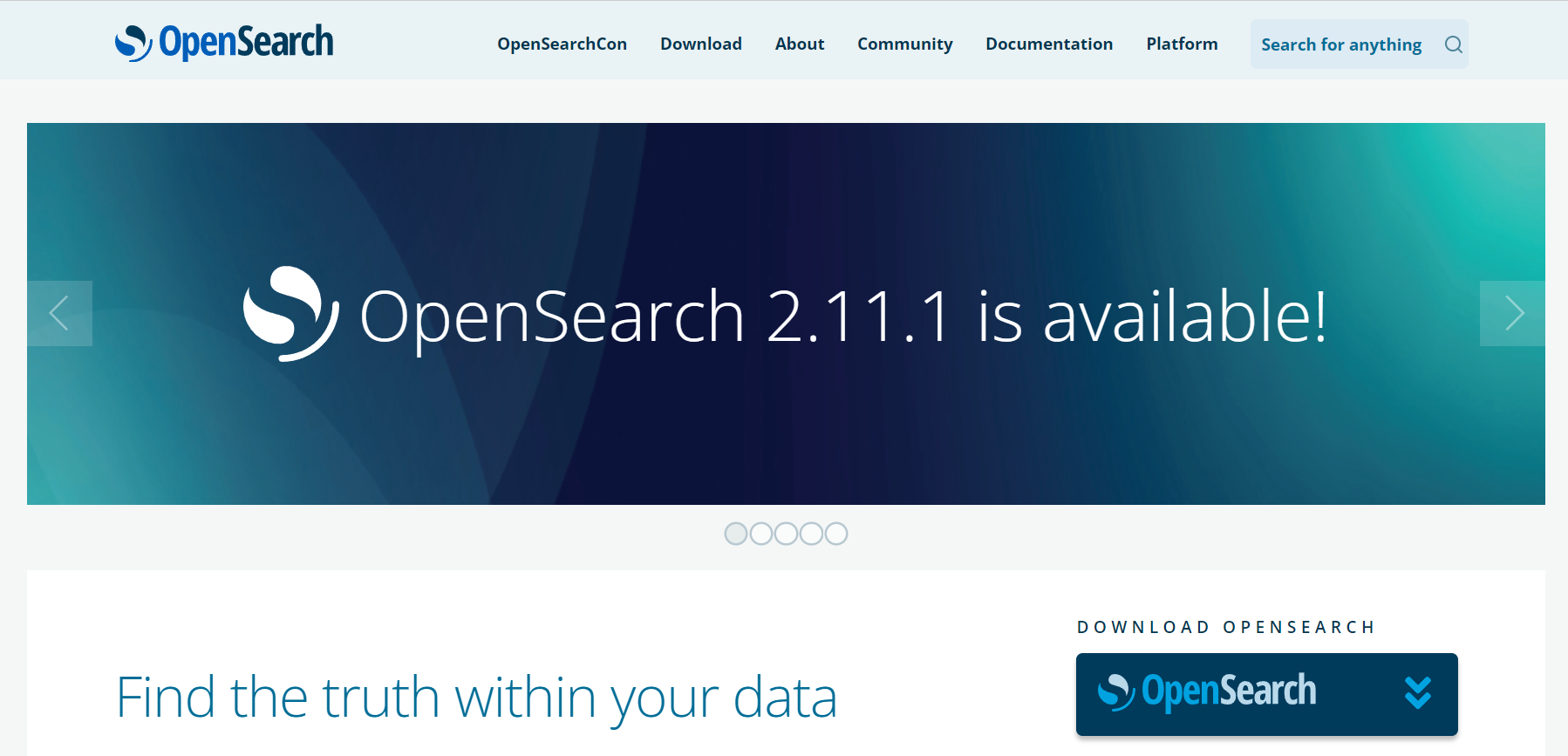
OpenSearch merges classical search, analytics, and vector search into a single solution. Its vector database features enhance ai application development, providing seamless integration of models, vectors, and information for vector, lexical, and hybrid search.
Key Features
- Vector search for various purposes
- Multimodal, semantic, visual search, and gen ai agents
- Creating product and user embeddings
- Similarity search for data quality operations
- Apache 2.0-licensed vector database
15. Apache Cassandra
Website: Apache Cassandra | Open source: Yes | GitHub stars: 8.3k
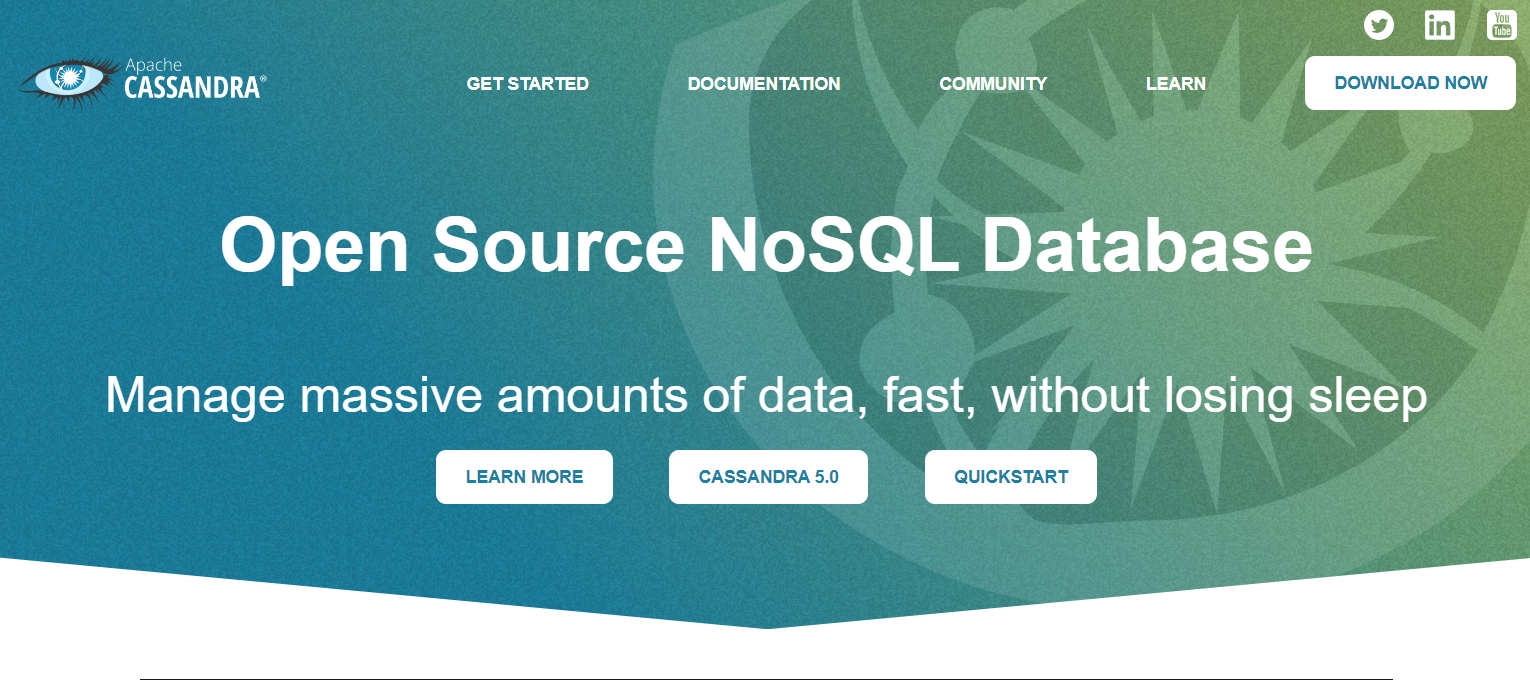
Apache Cassandra, a distributed, wide-column store, NoSQL database, is expanding its capabilities to include vector search. With its commitment to rapid innovation, Cassandra has become an attractive choice for ai developers dealing with massive data volumes.
Key Features
- Storage of high-dimensional vectors
- Vector search capabilities with VectorMemtableIndex
- Cassandra Query Language (CQL) operator for ANN search
- Extension to the existing SAI framework
Conclusion
The importance of vector databases in the realm of data science cannot be overstated. As the demand for efficient handling of high-dimensional data continues to rise, the landscape of vector databases is expected to evolve further. This article has provided a comprehensive overview of the top vector databases for data science in 2024, each offering unique features and capabilities.
As the field of artificial intelligence continues to advance, vector databases will become increasingly integral to data-driven decision-making. The plethora of tools available ensures that there is a vector database solution suitable for various project requirements.
If you want to master concepts of Generative ai, then we have the right course for you! Enroll in our ai?utm_source=blog_page&utm_medium=blog&utm_campaign=SEO” target=”_blank” rel=”noreferrer noopener”>GenAI Pinnacle Program, offering 200+ hours of immersive learning, 10+ hands-on projects, 75+ mentorship sessions, and an industry-crafted curriculum!
Share your experiences and insights into vector database solutions in our AnalyticsVidhya community!
 NEWSLETTER
NEWSLETTER





